Go, music and AI: Players discuss individuality, improvisation AI and society 02
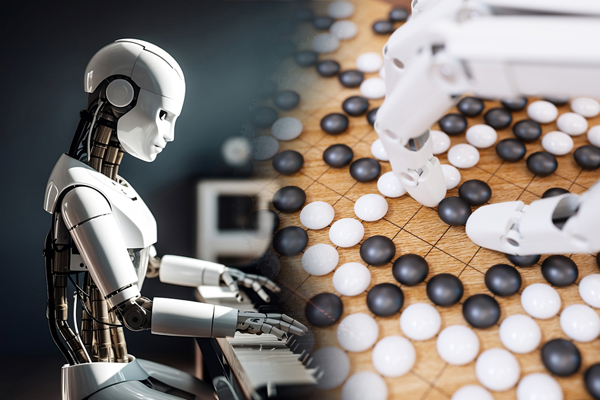
Rapid advances in artificial intelligence (AI) technology capable of generating images and text have been generating a great deal of buzz lately. In this series, we focus on how the relationship between generative AI — which has captivated the world with programs like ChatGPT — and people and society will evolve in the future.
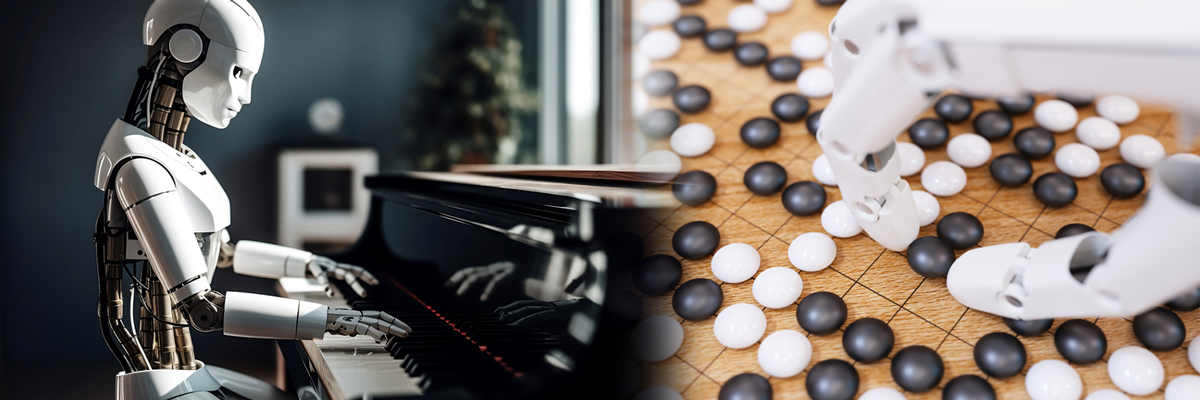
In the series’ first installment, we brought you an interdisciplinary roundtable discussion in which the participants talked about their expectations and concerns regarding generative AI, as well as the meaning and value of creativity. In Part Two, pianist Hayato Sumino and Go players Asami Ueno and Hirofumi Ohashi, who took part in the roundtable, continue the dialogue, on the future of the Go and music worlds adopting AI, along with the ideas that emerged from the earlier discussion.
Individuality and diversity following the advent of AI
Sumino: Professor Haneda’s comment from the roundtable discussion, in which he stated that the concept of humans as special beings with the unique ability to create is an artifact of the modern era, left a lasting impression on me. He said this view of creativity is not intrinsic and not something humans have held since ancient times.
Ohashi: The roundtable revealed the connections between Go and music. The two worlds share a similar cultural context in which records of past accomplishments have come to be preserved. In the case of classical music, this record takes the form of composers’ names being etched in history, and Go has kept historical records of games. In Europe, members of the upper class became patrons of musicians, resulting in the gradual preservation of musical scores, starting with church music. In time, individual composers began to assert themselves. In Japan, Tokugawa Ieyasu (the founder of Japan’s last shogunate, which ruled from 1603 to 1868) established the family lineage-based iemoto school system for the board games Go and shogi, which later led to the keeping of individual players’ game records. It seems to me that European countries and Japan both transitioned around the same time from an era of divine power, (centered on a Judeo-Christian God or influenced by the Japanese sacred powers kami) to an anthropocentric era in which people began to test their skills against each other and assert themselves as individuals.
Sumino: In that sense, it could be said that we are witnessing the reappearance of a godlike being in the form of AI. How will this change our view and attitude toward individual assertion? Just as a person’s character comes through in the way they play an instrument, I imagine that each Go player possesses their own individuality. Has anything changed since the advent of Go AI?
Ohashi: In the Go world, it’s harder to express one’s individuality now compared to, say, 50 years ago. With AI showing us perfect technique and winning moves, we humans have no choice but to emulate AI. That said, the uniqueness of Ms. Ueno’s play shines through even in this context.
Ueno: I am flattered to hear you say so. Compared to other players, I tend to come up with “bizarre” moves, which, I might add, don’t always work to my advantage. But to me, having more options is interesting because it’s more fun to try to win using a wider variety of moves. There are several Go AIs that have been developed, but in Japan, there are mainly two that are preferred by professionals. If a much stronger AI emerges in the future, the options for moves may become more limited, making the game half as fun.
Ohashi: Some say the difference between people is their individuality and the difference between AIs is their precision. There isn’t a single dominant Go AI yet, so it could be said we are still living in a polytheistic world with multiple gods. In the case of people, we experience various sensations and emotions such as joy and happiness, so we set various intermediate goals on the way to winning at Go. In contrast, AI goes straight for the win and doesn’t have any intermediate goals. I would say this tends to narrow down the possible solutions even more.
Ueno: I think relationships between people are also very important. The reason I decided to become a professional Go player is because I had rivals to compete against. If I hadn’t had such rivals since childhood, I might not have aspired to become a professional and just continued playing Go as a hobby.
Improvisation as communication
Sumino: In the case of improvisation, you create music on the spot, so what you produce is not always of high quality. But sometimes, music that you would not have been able to create even if you took the time to do so, just comes out of your body spontaneously. To me, the fun of improvisation lies in the unintentional creation that is difficult to express in words or as a formula.
Ohashi: When I was playing the duet side by side on the keyboard with Mr. Sumino during the roundtable, my mind went completely blank. When I watched the video recording of that performance later, it reminded me of “instructional Go,” where a professional player plays with a handicap against an amateur. The pro first makes moves to assess their opponent’s ability, then decides their next moves depending on how the opponent responds to the test, and the game proceeds in this manner. In our duet, I wonder if Mr. Sumino was adjusting his performance while testing my skills.
Sumino: I might have been doing that unconsciously. There’s an element of communication in improvisation. I think improvisation where you watch what the other person is doing and come up with a response on the spot is very human.
Ohashi: We may have been silently exchanging information. This is actually similar to Go. There is another name for Go, shudan (literally “hand talk”), which refers to knowing what each other is thinking without talking.
Ueno: In Go matches against human opponents, the atmosphere in the air comes out in the game. I often decide my first move based on the vibes I get from the opponent I’m facing in front of me. If my opponent seems like they are sizing me up or if they are showing signs of nervousness, I may deliberately choose an unexpected opening. Human Go players tend to have a favorite strategy. But AIs don’t have such traits, so it is not necessary to improvise when playing against AI. I think this is the big difference between humans and AI. In shogi, a board game similar to chess, the person who can predict further ahead is said to be stronger. However, in Go, sense is a more important part of the game than predicting what’s ahead from the start.
Sumino: If we are talking about improvisation in the sense of creating music in real time, that might be possible with a high-performance computer. But, in both music and Go, people act while perceiving various things using their senses, so to what extent it is feasible for AI to input all these variables and generate some kind of output is questionable.
Coming age of AI, human coexistence
Sumino: I think there is a concern in all fields that AI poses a threat to human existence. However, I believe that generative AI will take humans as a whole to the next level. For example, if AI can be used to teach piano, this will enable children in areas with few educational opportunities to improve their skills at a faster pace.
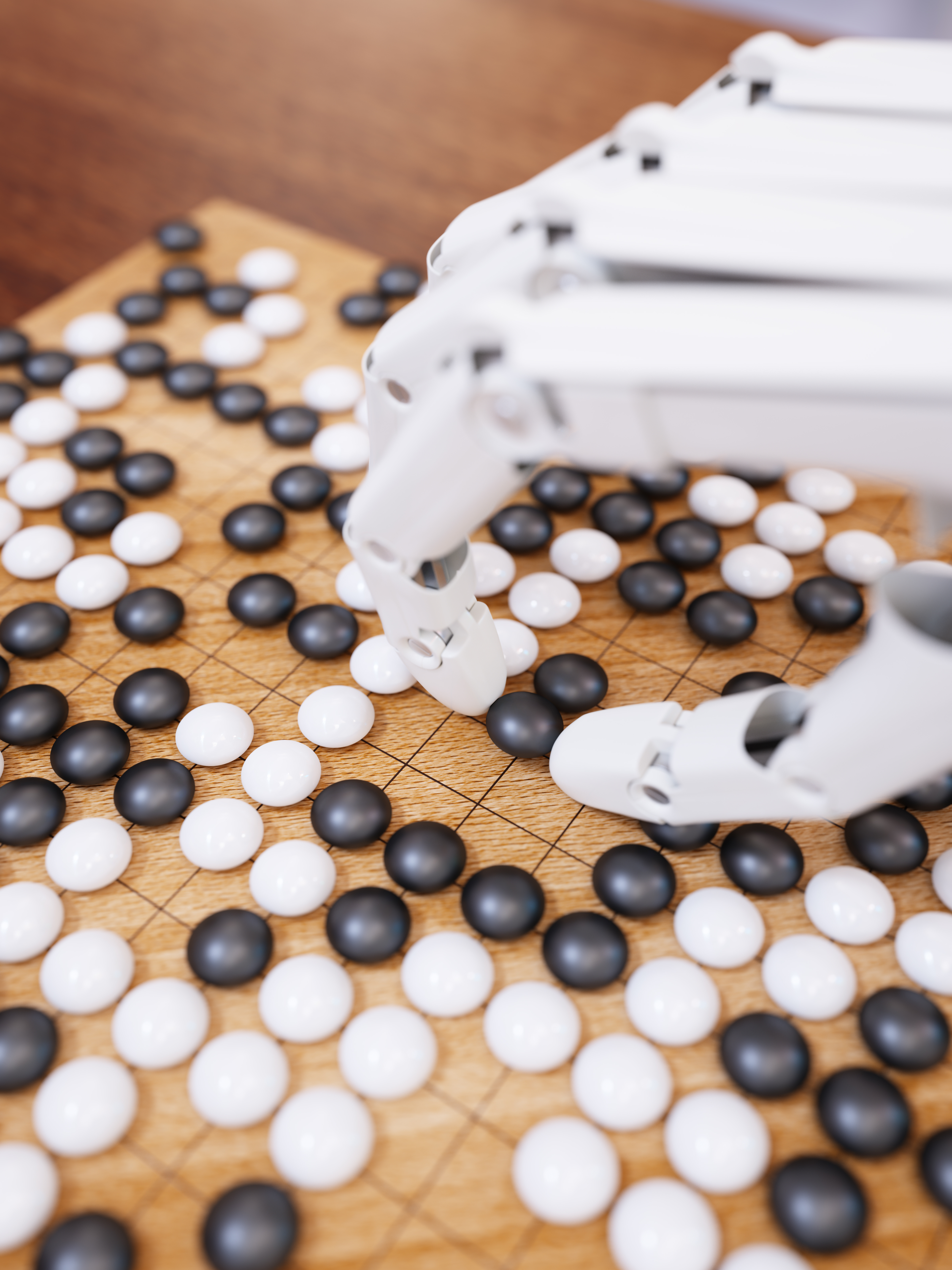
Ohashi: China, which is the main market for Go, is actively pursuing AI development. Just recently, a robot that can play Go was introduced. The robot apparently can also help you study the game, so there is, understandably, a fear that Go teachers could lose their jobs. But the public doesn’t seem to harbor a sense of crisis and people are flocking to Go schools to see the robots out of curiosity. As there are many users who want to practice freely with the robots and get better, I see signs that the demand for schools that can effectively use robots and AI will increase. It is likely that robots and human teachers will come to coexist for some time.
Ueno: Recently, QR barcodes and self-checkout systems are increasingly being used for ordering and payment in stores, and opportunities to communicate with clerks and servers are decreasing. I like talking with the staff, so it’s a little scary for me to imagine a future full of robots in the real world. Regarding Go AIs, they have already become quite powerful and I feel their rate of improvement has decreased recently. When I practice, I use Go AI as a partner for developing strategies. To be honest, I hope it stays at that level.
Sumino: I feel that in any field, AI will come to be used for applications and in situations that are most appropriate. It doesn’t seem that difficult to create a humanoid robot that can play the piano, and I would like to perform in a concert with such a robot in the near future. It’s my guess that more and more people will use robots and avatars that perform perfectly without missing a note and making any mistakes for business. I think competition between humans and robots to grab their share of the pie will intensify as the overall levels of human aptitude rise and robots’ participation in various realms ramps up.
Ohashi: Even in Go, where there is always a winner and a loser, competition is becoming so intense that I worry what will happen in the future. Meanwhile, life expectancy is increasing, and globally, there are Go players who are retiring at a young age to challenge themselves in other fields. We may be able to enjoy three chapters of life thanks to AI.
Ueno: Compared to when I was in my teens and as I’ve entered my 20s, I feel it’s getting more and more difficult with time to judge and anticipate what the endgame will look like. I would like to continue studying the game together with AI and hope that when I’m in my 30s, I’m still a professional Go player chasing various titles.
See related article: AI and society 01: Go, music and AI: An interdisciplinary dialogue on creativity
A roundtable discussion with Hayato Sumino, Asami Ueno, Hirofumi Ohashi; Professor Hitoshi Matsubara and Associate Professor Arisa Ema of the University of Tokyo; and Professor Masashi Haneda, director of Tokyo College.
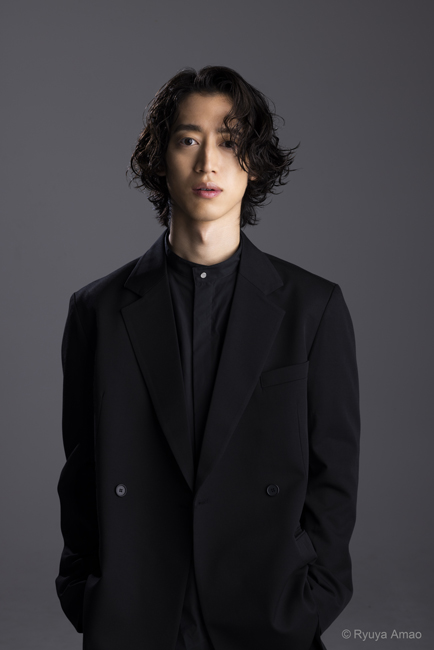 Hayato Sumino |
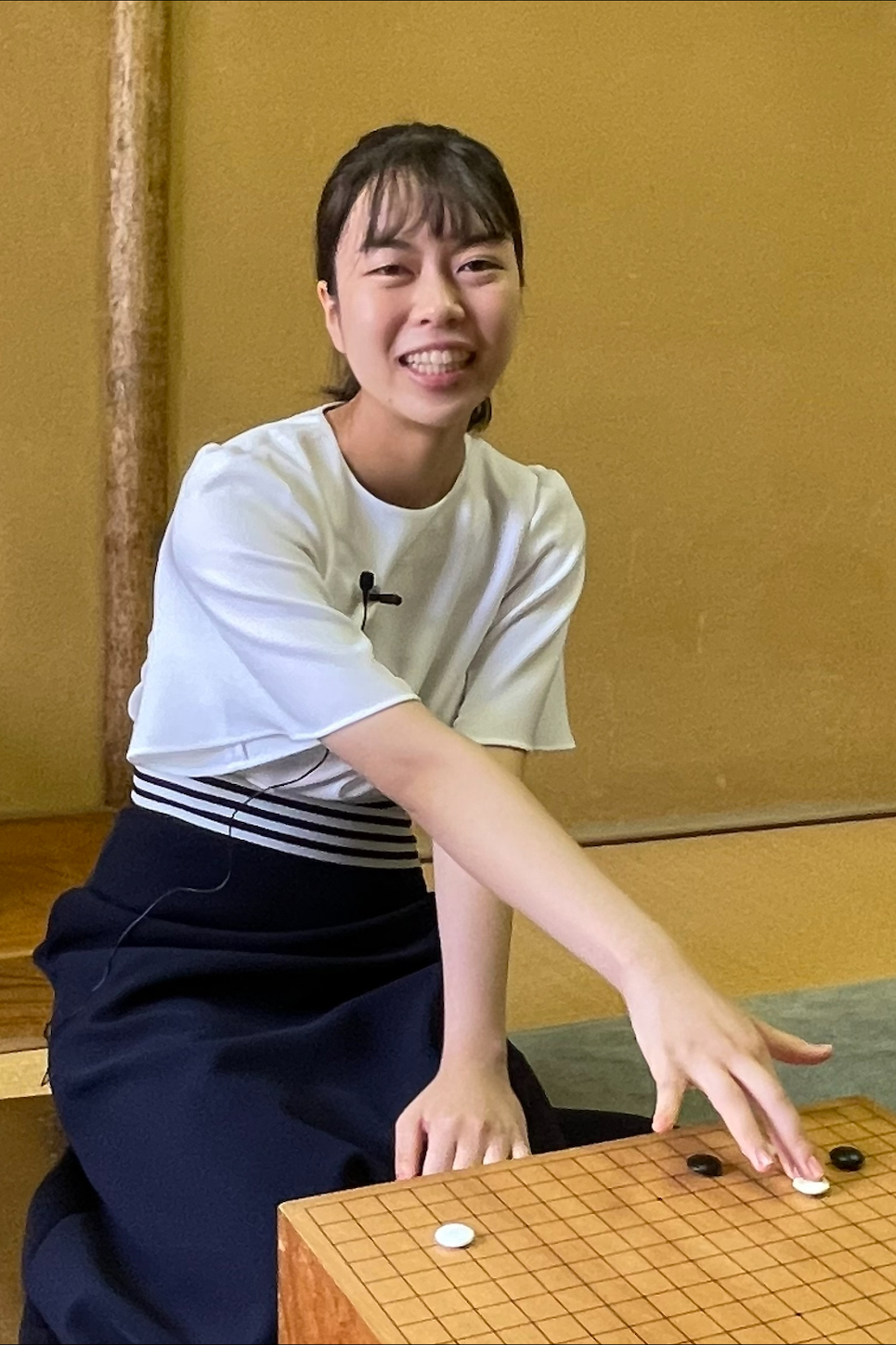 Asami Ueno |
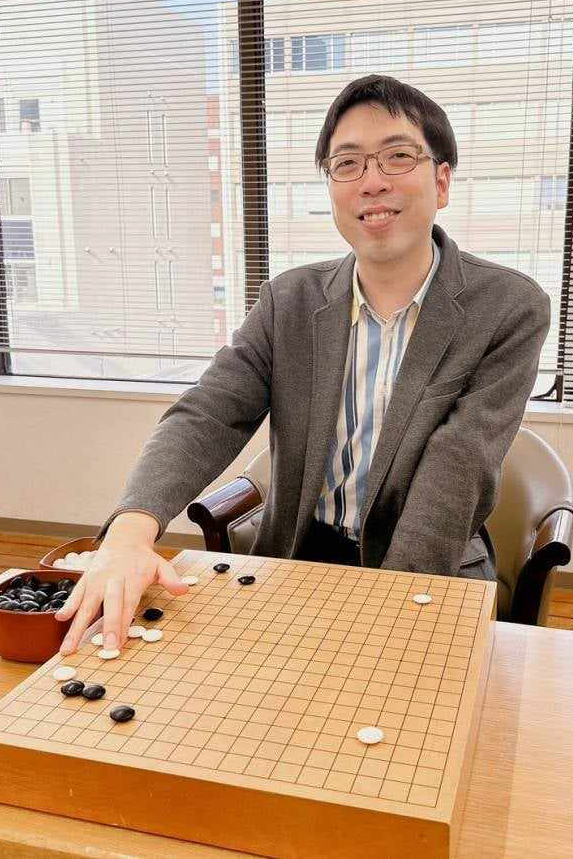 Hirofumi Ohashi |
Interviewed in October 2023
Interview: Yuki Terada






